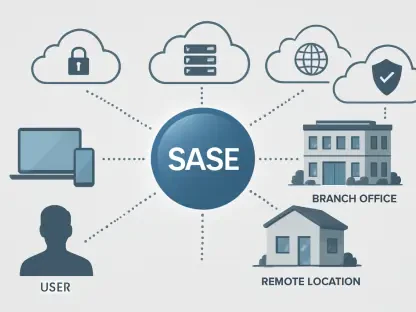In the ever-evolving field of cybersecurity, threats are not only becoming more frequent but also increasingly sophisticated. One of the most prominent developments shaping this landscape is the rise of multi-platform malware. This newly advanced malware targets operating systems such as Windows and Linux, capitalizing on misconfigurations to inject malicious payloads. By leveraging a Python script, attackers have deployed crypto-miners and performed data exfiltration, highlighting the burgeoning need for advanced security mechanisms. This capability underscores the critical necessity for companies and individuals to stay informed about such threats and fortify systems against them.
Features and Performance of Multi-Platform Malware
Multi-platform malware is notable for its versatility and adaptability. A key aspect of this malware is its capability to operate across various operating systems seamlessly. In a recent attack campaign, researchers identified tactics that exploited both Windows and Linux systems. For Windows, attackers utilized Python scripts to install the Java Development Kit (JDK), facilitating malware deployment via a Java Archive (JAR) file. This method allows cybercriminals to execute suspicious commands with ease by creating renamed resources that evade standard detection mechanisms. Meanwhile, on Linux, similar methods are used to maintain stealth and effectiveness, leveraging operating system-specific vulnerabilities.
Evasion techniques in multi-platform malware are highly advanced. These malicious programs employ tactics such as credential theft, sandbox evasion, and PowerShell abuse to slip through conventional security measures. Of particular concern is the way attackers use infostealers to harvest credentials and tokens from platforms like Discord. Additionally, the incorporation of native DLL files aids the malware in executing XOR encoding/decoding, enhancing concealment. The sophisticated use of Windows named pipe manipulation and WebSockets for system reconnaissance marks a considerable expansion in capabilities, revealing how attackers can integrate various elements to bolster their malicious intent.
Recent Innovations and Real-World Impact
Innovations in multi-platform malware continue to evolve. Attackers are increasingly employing evasion techniques that focus on behavioral patterns, shifting tactics to avoid detection by conventional tools. A noteworthy trend is the move toward behavior-based monitoring and anomaly detection, allowing attackers to stay one step ahead of their adversaries. The growing alignment of cybercriminal strategies with emerging technologies exemplifies the dynamic nature of potential threats, driving deeper explorations into the adaptive methods used across platforms.
The impact of such malware on businesses and consumers is staggering. Enterprises across various sectors have suffered significant data breaches, resulting in both financial and reputational losses. Notable incidents showcase the disruptive power of these attacks, often leading to prolonged recovery periods and an increased focus on cybersecurity. The wider adoption of robust detection strategies like YARA scanning and DNS monitoring is essential to safeguard sensitive information and maintain the integrity of critical systems.
Challenges and Future Considerations
Detecting and mitigating multi-platform malware remains challenging due to several technical and regulatory hurdles. The sophistication of these attacks means that traditional security measures often fall short. There is an urgent need for advanced security solutions that incorporate layered runtime security controls. Regulatory measures are also struggling to keep pace with the rapid evolution of malware, necessitating continuous adaptation and innovation.
Looking ahead, the trajectory of multi-platform malware is set to significantly influence cybersecurity strategies. As detection technologies evolve, breakthroughs in identifying and neutralizing threats are expected. The long-term impact on cybersecurity will likely focus on developing proactive and adaptive measures that are capable of countering even the most sophisticated malware campaigns, ensuring a secure digital environment for future innovation and growth.
Summary and Key Insights
The review of multi-platform malware has underscored its sophistication and adaptability to various operating systems. Its advanced techniques in credential theft, evasion, and system exploitation represent a formidable challenge for current security infrastructures. The past emergence of such threats propelled a shift in cybersecurity approaches, emphasizing the need for comprehensive strategies and innovative detection technologies. Future efforts will aim to explore new methodologies and strengthen defenses, ensuring that systems can withstand these ever-evolving threats.









